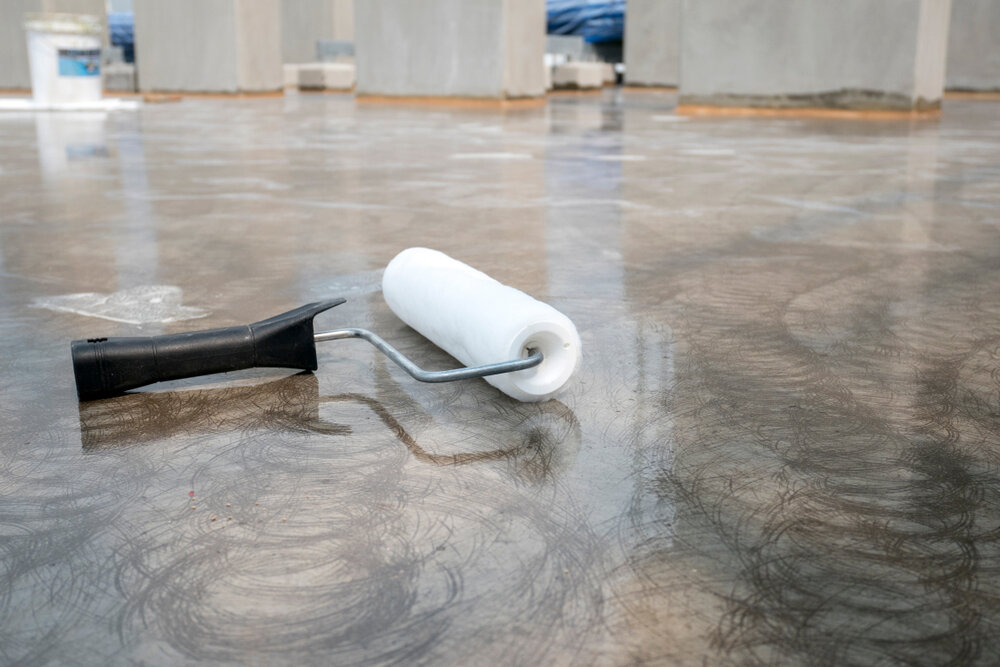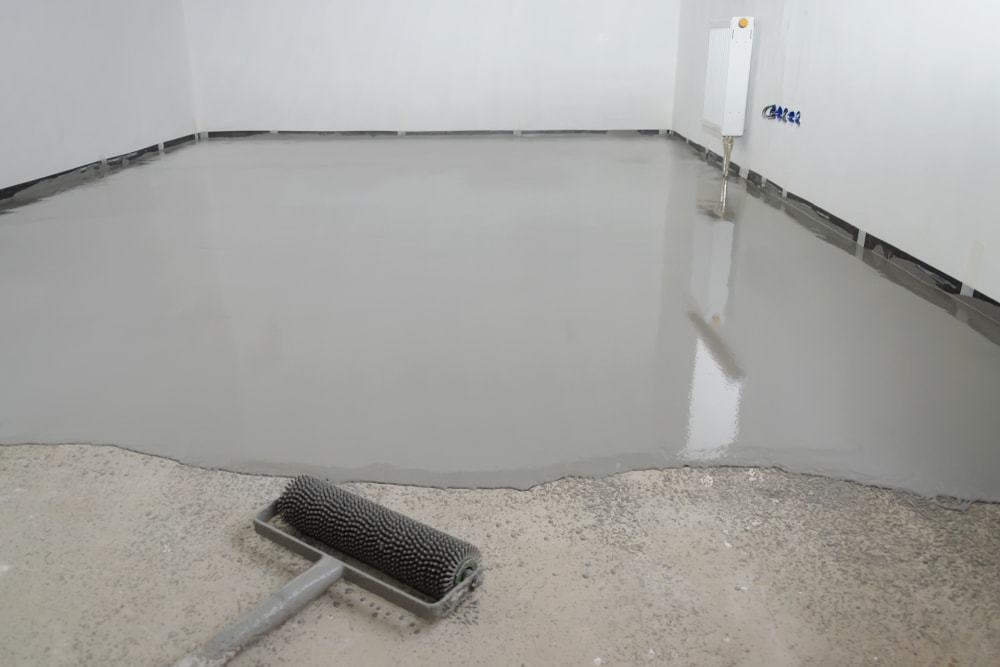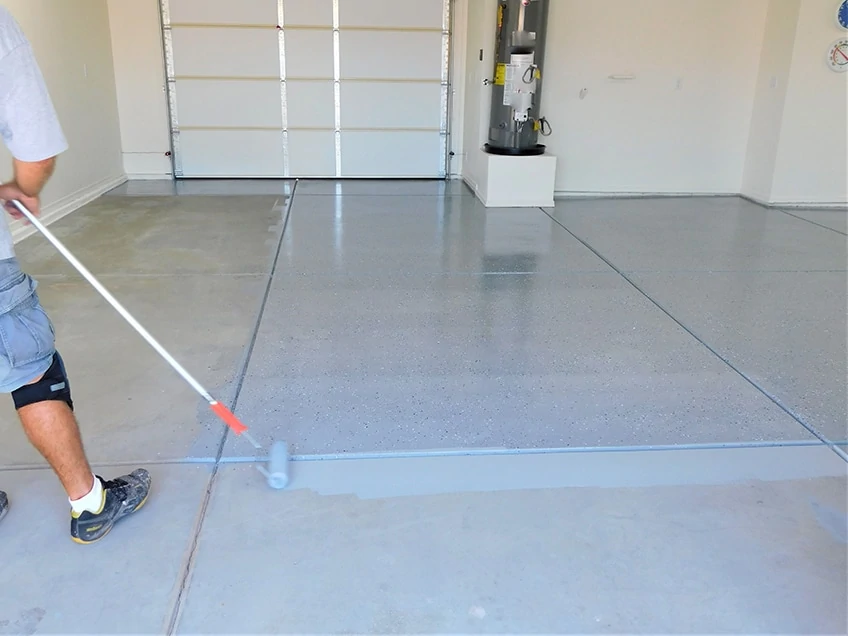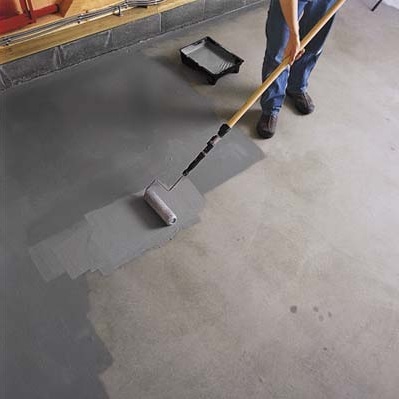Epoxy Floor Paint: What It Is and How It Works
Epoxy floor paint is a popular choice for homeowners and businesses looking to enhance the durability, aesthetics, and functionality of their floors. This type of paint consists of epoxy resin and a hardening agent, which chemically react to form a tough, long-lasting surface coating. Here’s a closer look at what epoxy floor paint is and how it works.
- Understanding Epoxy Floor Paint Composition: Epoxy floor paint is composed of two main components: epoxy resin and a hardening agent, often referred to as a catalyst or activator. When these two components are mixed, a chemical reaction occurs, causing the mixture to cure and harden into a durable coating. Additionally, epoxy floor paint may contain additives such as pigments, fillers, and aggregates to enhance performance and aesthetics.
- The Chemical Reaction: The key to the effectiveness of epoxy floor paint lies in the chemical reaction between the resin and hardening agent. This reaction, known as curing, creates cross-links between the molecules, resulting in a strong, resilient surface. As the epoxy cures, it forms a seamless, non-porous finish that resists stains, chemicals, and moisture, making it ideal for a variety of applications.
- Versatility and Applications: Epoxy floor paint is prized for its versatility and can be applied to various substrates, including concrete, wood, and metal. It is commonly used in residential garages, commercial warehouses, industrial facilities, and even in decorative flooring applications. With its high-performance properties and customizable finishes, epoxy floor paint offers endless possibilities for enhancing both the appearance and functionality of interior and exterior surfaces.
- Benefits of Epoxy Floor Paint: There are numerous benefits to using epoxy floor paint. Not only does it provide a durable and attractive finish, but it also offers resistance to abrasion, chemicals, UV rays, and heavy foot traffic. Epoxy-coated floors are easy to clean and maintain, requiring minimal upkeep compared to other flooring options. Additionally, epoxy floor paint can improve safety by adding slip resistance and enhancing visibility with reflective coatings.
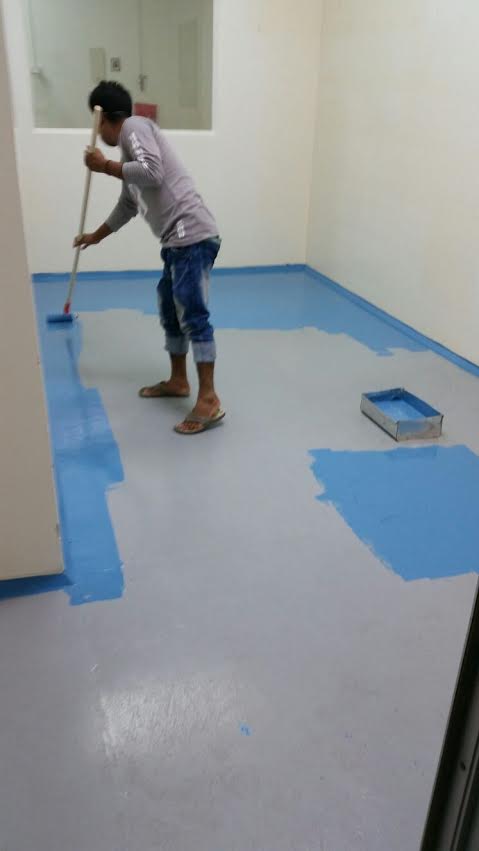
Preparing Your Surface
Before applying epoxy floor paint, proper surface preparation is essential to ensure adhesion, durability, and a flawless finish. Here are the essential steps you need to take to prepare your surface for epoxy coating.
Cleaning and Degreasing: The first step in surface preparation is to thoroughly clean and degrease the substrate to remove any dirt, oil, grease, or contaminants. Use a degreaser or a mild detergent and scrub the surface with a stiff brush or broom. Rinse thoroughly with clean water and allow the surface to dry completely before proceeding.
Repairing Cracks and Imperfections: Inspect the surface for any cracks, holes, or imperfections, and repair them as needed. Fill cracks and holes with an epoxy patching compound or a suitable filler, and smooth the surface with a putty knife or trowel. Allow the repairs to cure according to the manufacturer’s instructions before proceeding to the next step.
Etching or Mechanical Abrasion: To promote adhesion, it’s important to etch or mechanically abrade the surface to create a rough texture. This can be done using a concrete grinder, shot blaster, or chemical etching solution. Etching opens up the pores of the substrate, allowing the epoxy to penetrate and bond more effectively.
Moisture Testing: Moisture can negatively impact the adhesion and performance of epoxy floor coatings, so it’s crucial to test the substrate for moisture content. Use a moisture meter to measure the moisture levels in the concrete. If excessive moisture is present, it may be necessary to apply a moisture barrier or take remedial measures before proceeding with the epoxy coating.
Priming the Surface: Finally, apply a primer to the prepared surface to further enhance adhesion and ensure uniformity of the epoxy coating. Choose a primer specifically designed for use with epoxy floor paint and follow the manufacturer’s instructions for application and drying times. Once the primer has cured, the surface is ready for the application of epoxy floor paint.
Applying Epoxy Floor Paint Like a Pro
Applying epoxy floor paint requires careful planning, preparation, and execution to achieve professional results. Here are some techniques and tips to help you apply epoxy floor paint like a pro.
Read and Follow Instructions: Before you begin, carefully read and follow the manufacturer’s instructions for the epoxy floor paint product you’re using. Pay attention to recommended surface preparation methods, mixing ratios, application techniques, and curing times. Following the instructions will ensure optimal performance and durability of the epoxy coating.
Choose the Right Tools and Equipment: Selecting the right tools and equipment is crucial for a successful epoxy floor paint application. Depending on the size and complexity of the project, you may need brushes, rollers, squeegees, or even a paint sprayer. Additionally, wear appropriate personal protective equipment, such as gloves, goggles, and respirators, to protect yourself from exposure to fumes and chemicals.
Work in Sections: Divide the area into manageable sections and work on one section at a time to ensure even coverage and avoid inconsistencies. Start at the farthest corner and work your way toward the exit to avoid painting yourself into a corner. Use a consistent application technique, such as back-rolling or crisscrossing, to achieve uniform coverage and minimize roller marks.
Apply Multiple Coats: For optimum durability and coverage, apply multiple coats of epoxy floor paint as recommended by the manufacturer. Allow each coat to dry or cure completely before applying the next coat. Typically, two or more coats are required to achieve the desired thickness and finish. Be sure to maintain a wet edge to avoid lap marks and ensure seamless blending between coats.
Consider Decorative Effects: Epoxy floor paint offers endless possibilities for customization and decorative effects. You can add color flakes, metallic pigments, or decorative chips to create unique patterns and textures. Experiment with different techniques, such as swirling or marbling, to achieve the desired look. Be sure to apply any decorative elements evenly and consistently for a professional finish.
Allow Sufficient Curing Time: After applying the final coat of epoxy floor paint, allow sufficient time for curing before subjecting the surface to foot traffic or heavy loads. Curing times can vary depending on environmental conditions, temperature, and humidity levels. Follow the manufacturer’s recommendations for curing times to ensure optimal performance and durability of the epoxy coating.
Maintenance and Longevity: Caring for Your Epoxy-Coated Floors
Epoxy-coated floors are known for their durability and low maintenance requirements, but proper care and maintenance are still essential to ensure their longevity and performance. Here are some tips for caring for your epoxy-coated floors to keep them looking great for years to come.
Regular Cleaning: To maintain the appearance and cleanliness of your epoxy-coated floors, it’s important to establish a regular cleaning routine. Sweep or vacuum the floors regularly to remove dirt, dust, and debris. Use a mild detergent or floor cleaner and a soft-bristle brush or mop to clean the surface periodically. Avoid using abrasive cleaners or scrubbing pads, as they can damage the epoxy finish.
Preventive Maintenance: Take proactive measures to prevent damage to your epoxy-coated floors. Place mats or rugs at entryways to trap dirt and moisture before it can be tracked onto the floor. Use furniture pads or coasters to protect the surface from scratches and dents caused by heavy furniture or equipment. Avoid dragging or sliding heavy objects across the floor, as this can cause abrasions and damage to the epoxy coating.
Avoid Harsh Chemicals: While epoxy-coated floors are resistant to many chemicals, prolonged exposure to harsh chemicals can still damage the finish over time. Avoid using acidic or alkaline cleaners, as well as solvents, bleach, and ammonia-based products, as they can degrade the epoxy coating. Instead, use mild, pH-neutral cleaners and follow the manufacturer’s recommendations for cleaning and maintenance.
Inspect and Repair: Periodically inspect your epoxy-coated floors for signs of wear, damage, or delamination. Look for areas where the coating may be peeling, blistering, or cracking, and address any issues promptly to prevent further damage. Repair small areas of damage by spot-treating with an epoxy patching compound or a suitable filler, following the manufacturer’s instructions for application and curing.
Reapply Topcoat: Over time, the topcoat of your epoxy-coated floors may become worn or dull due to foot traffic, UV exposure, and other factors. To restore the shine and protection of the surface, consider reapplying a fresh coat of epoxy topcoat. This will not only rejuvenate the appearance of the floors but also provide an additional layer of protection against wear and tear.
Design Ideas and Customization with Epoxy Floor Paint
Epoxy floor paint offers endless possibilities for customization and creative expression, allowing you to transform ordinary floors into stunning works of art. Whether you’re looking to add color, texture, or visual interest to your space, epoxy floor paint provides a versatile and durable solution. Here are some design ideas and customization options to explore with epoxy floor paint.
Color Selection: One of the simplest ways to customize epoxy-coated floors is by choosing the right color or colors for your space. Epoxy floor paint comes in a wide range of colors, from bold and vibrant hues to subtle and neutral tones. Consider the overall aesthetic of your space, as well as the mood and atmosphere you want to create when selecting a color scheme for your floors.
Color Flakes and Chips: Add texture and visual interest to your epoxy-coated floors by incorporating color flakes or chips into the coating. These decorative elements come in a variety of shapes, sizes, and colors, allowing you to create unique patterns and designs. Scatter the flakes or chips evenly across the surface during the application process for a custom look that enhances the appearance of your floors.
Metallic Pigments: Create a striking metallic effect with epoxy floor paint by incorporating metallic pigments into the coating. These pigments produce a shimmering, reflective finish that adds depth and dimension to the surface. Experiment with different metallic colors and application techniques, such as blending or marbling, to achieve the desired look.
Stenciling and Graphics: Make a bold statement with stenciled designs or graphics on your epoxy-coated floors. Use stencils to create geometric patterns, logos, or intricate motifs that reflect your personal style or brand identity. With careful planning and precision, you can achieve crisp, clean lines and intricate details that enhance the visual impact of your floors.
3D Effects and Illusions: Push the boundaries of creativity with epoxy floor paint by experimenting with 3D effects and illusions. Create the illusion of depth or dimensionality by layering multiple colors or textures, or use techniques such as shadowing or perspective to create optical illusions that trick the eye. With a little imagination and experimentation, you can turn your floors into a mesmerizing work of art.
Custom Borders and Accents: Define and accentuate areas of your space with custom borders and accents created with epoxy floor paint. Use contrasting colors, patterns, or textures to delineate different zones or highlight architectural features. Whether you’re outlining a pathway, framing a seating area, or accenting a logo or emblem, custom borders and accents can add visual interest and sophistication to your floors.
Epoxy Floor Coating Industrial & Commercial
The Ultimate Guide to Commercial Grade Epoxy Floor Coatings
Best Epoxy Floor Paint – Complete Guide for Epoxy Painting
Epoxy Floor Coatings vs. Epoxy Paint: Just How Different Are They
Epoxy Coatings: Types of Epoxy Flooring u0026 Self Leveling Epoxy
Related Posts:
- Sanding Garage Floor For Epoxy
- Applying Epoxy To Garage Floor
- Office Epoxy Flooring
- Cost To Epoxy 2 Car Garage Floor
- Valspar 2 Part Clear Gloss Garage Floor Epoxy Kit
- Sika Epoxy Flooring Color Chart
- How Much Is Epoxy Floor Coating?
- Decorative Epoxy Floor Coating
- Sherwin Williams 2 Part Epoxy Floor Paint
- Why Epoxy Garage Floor
